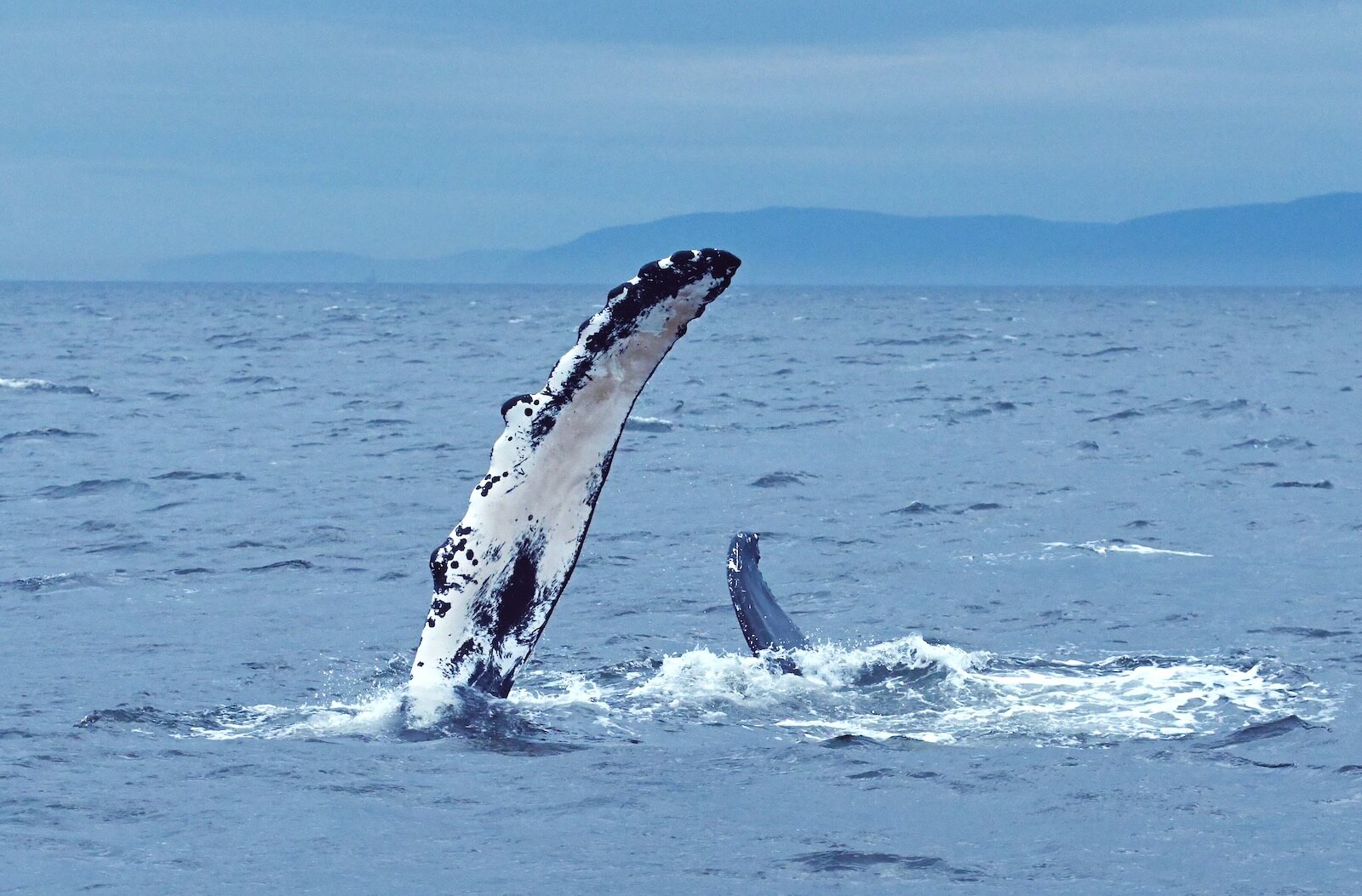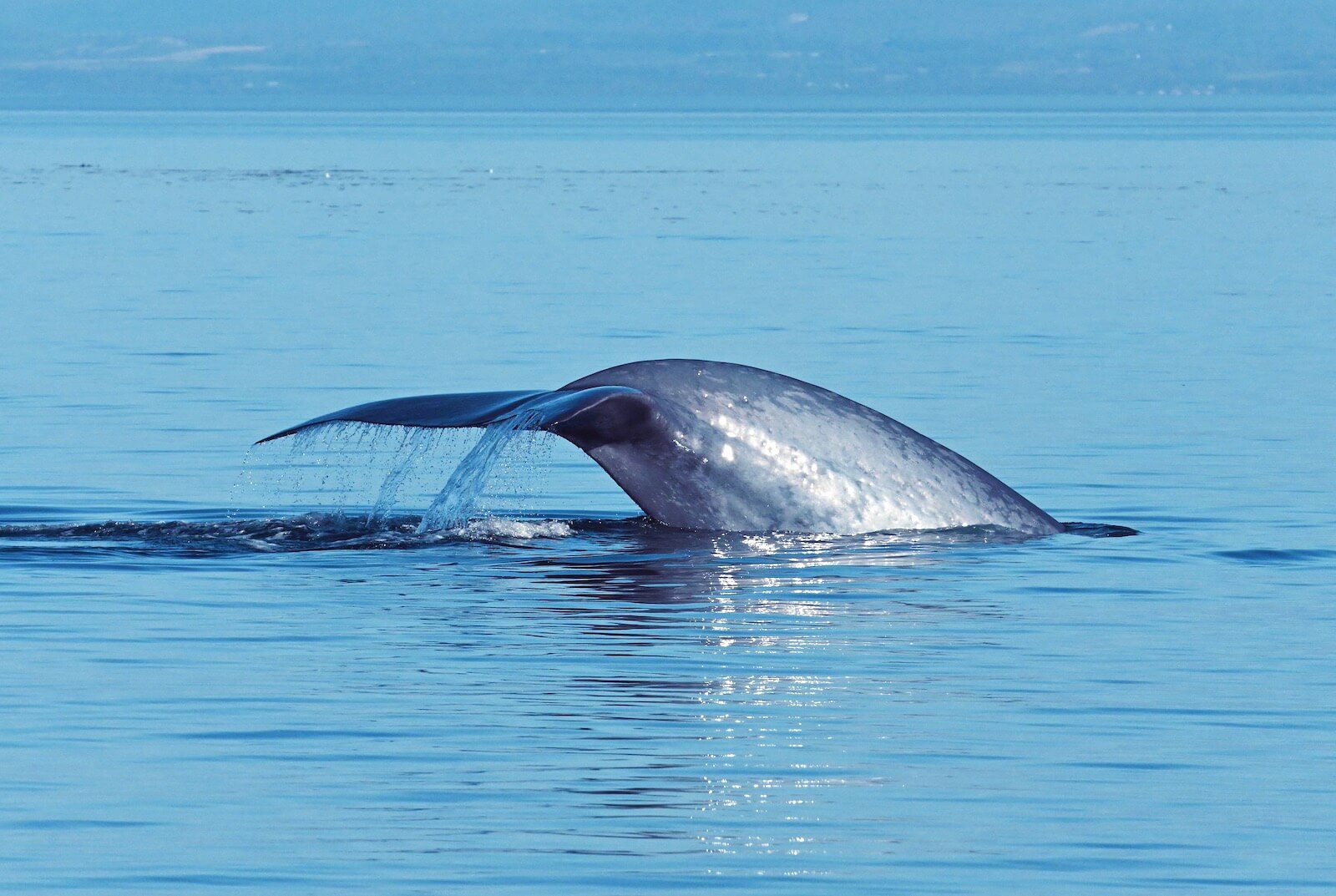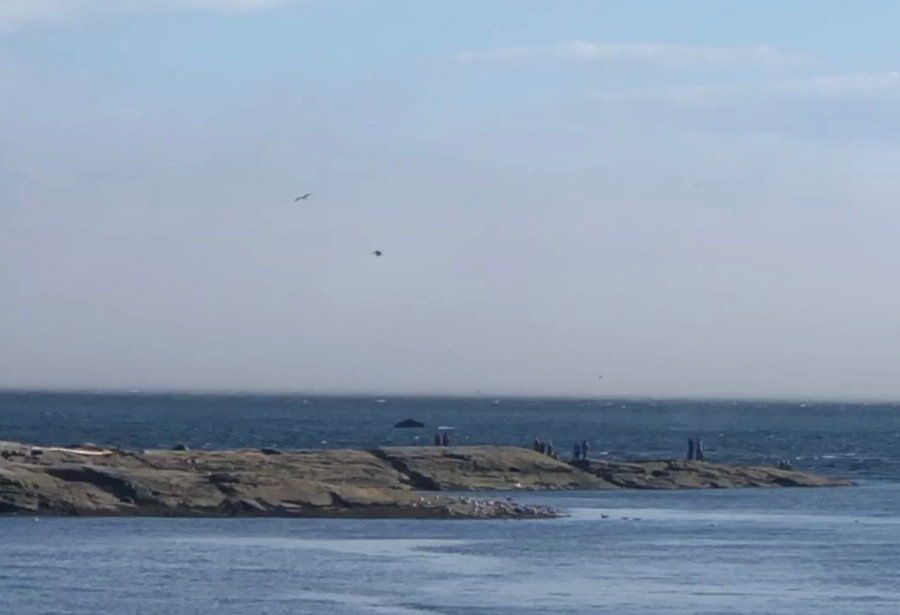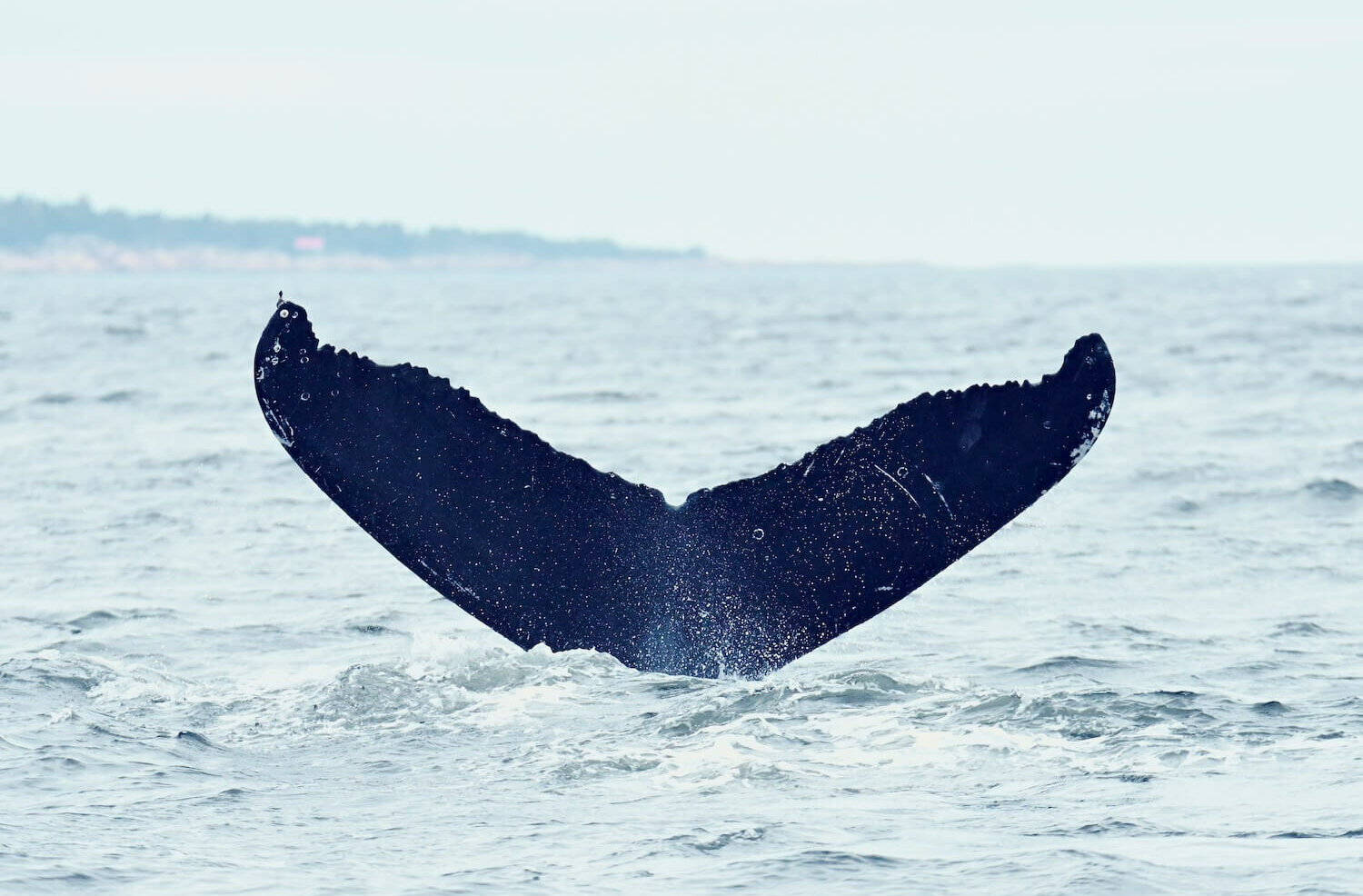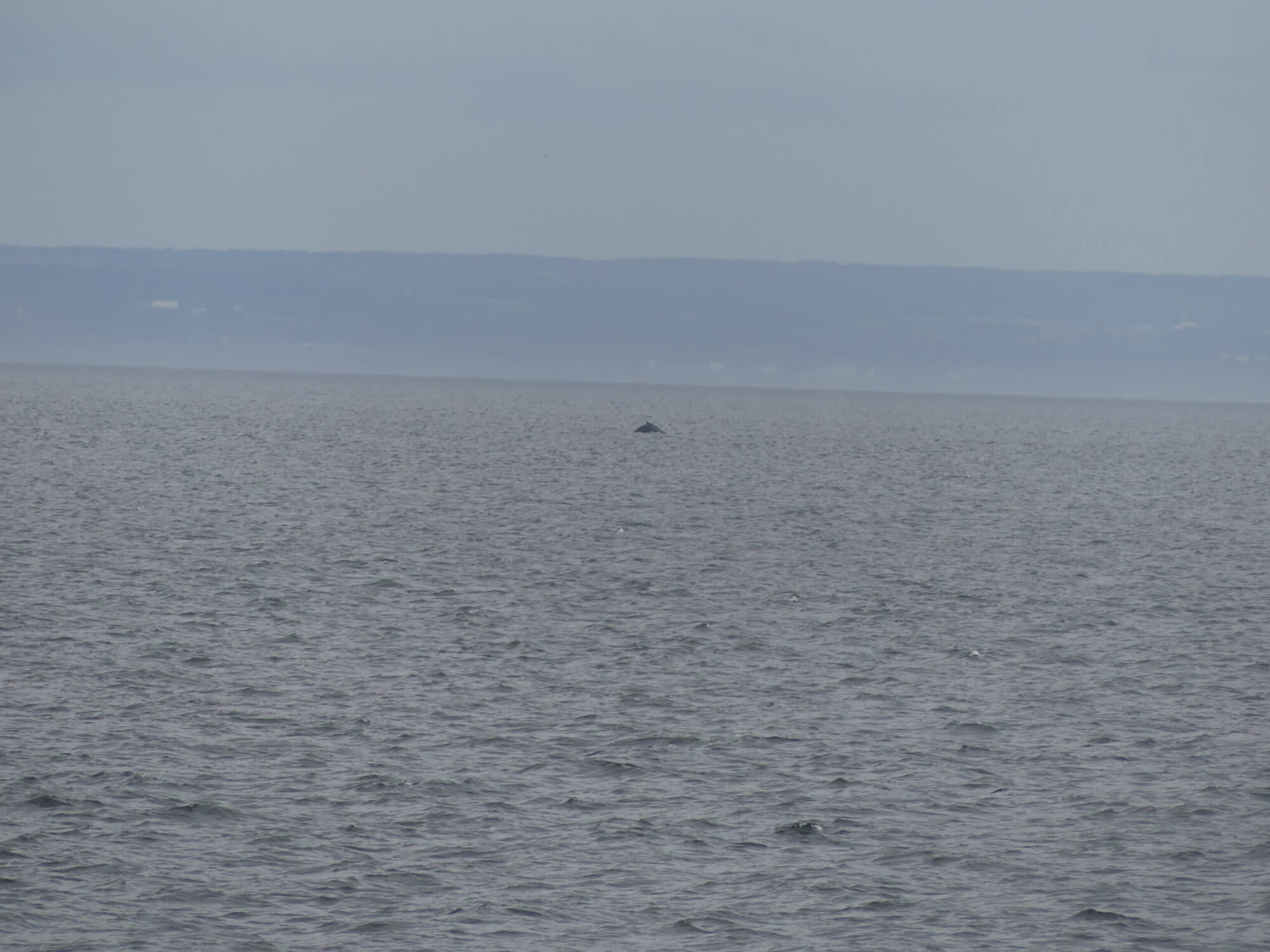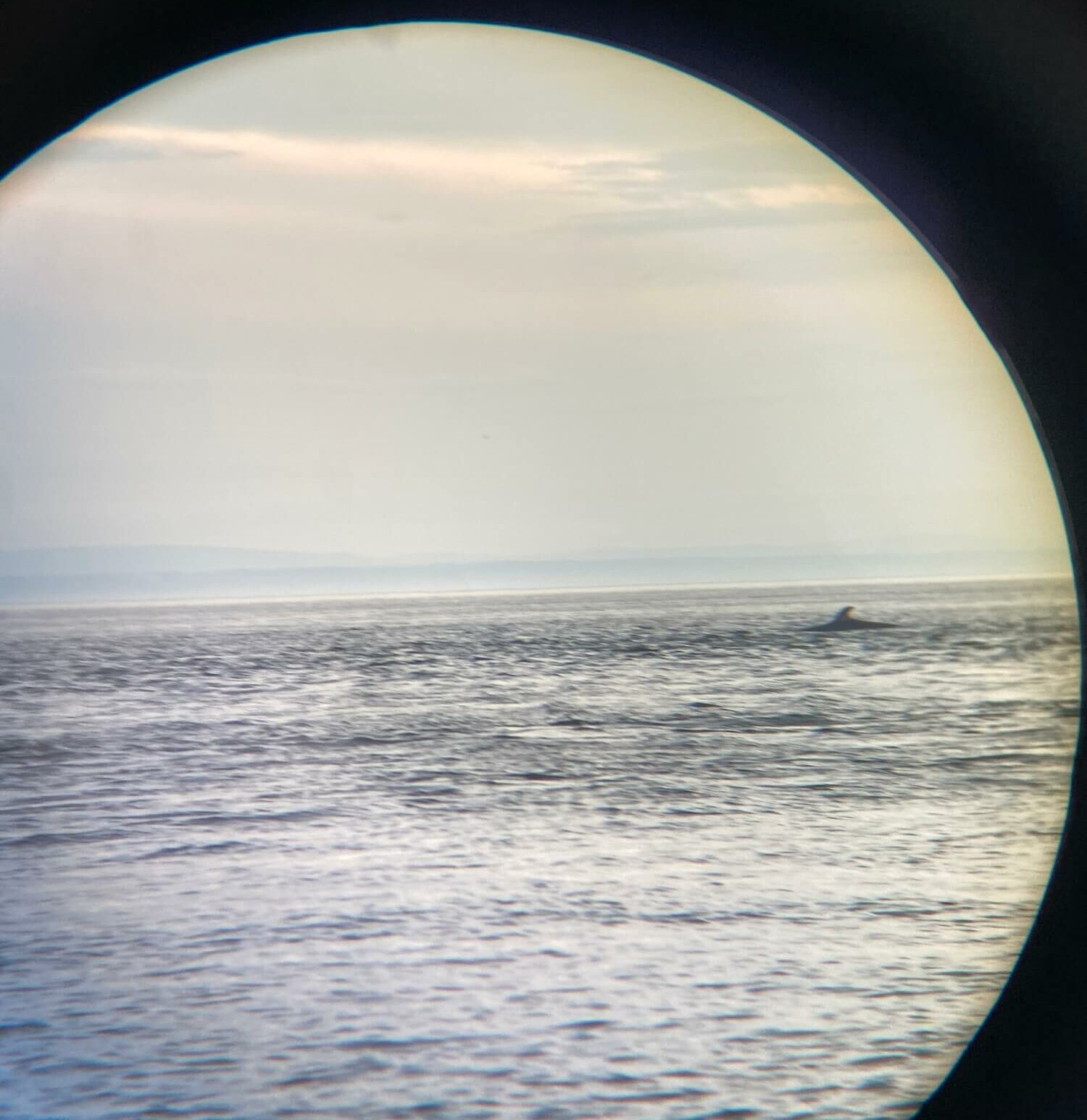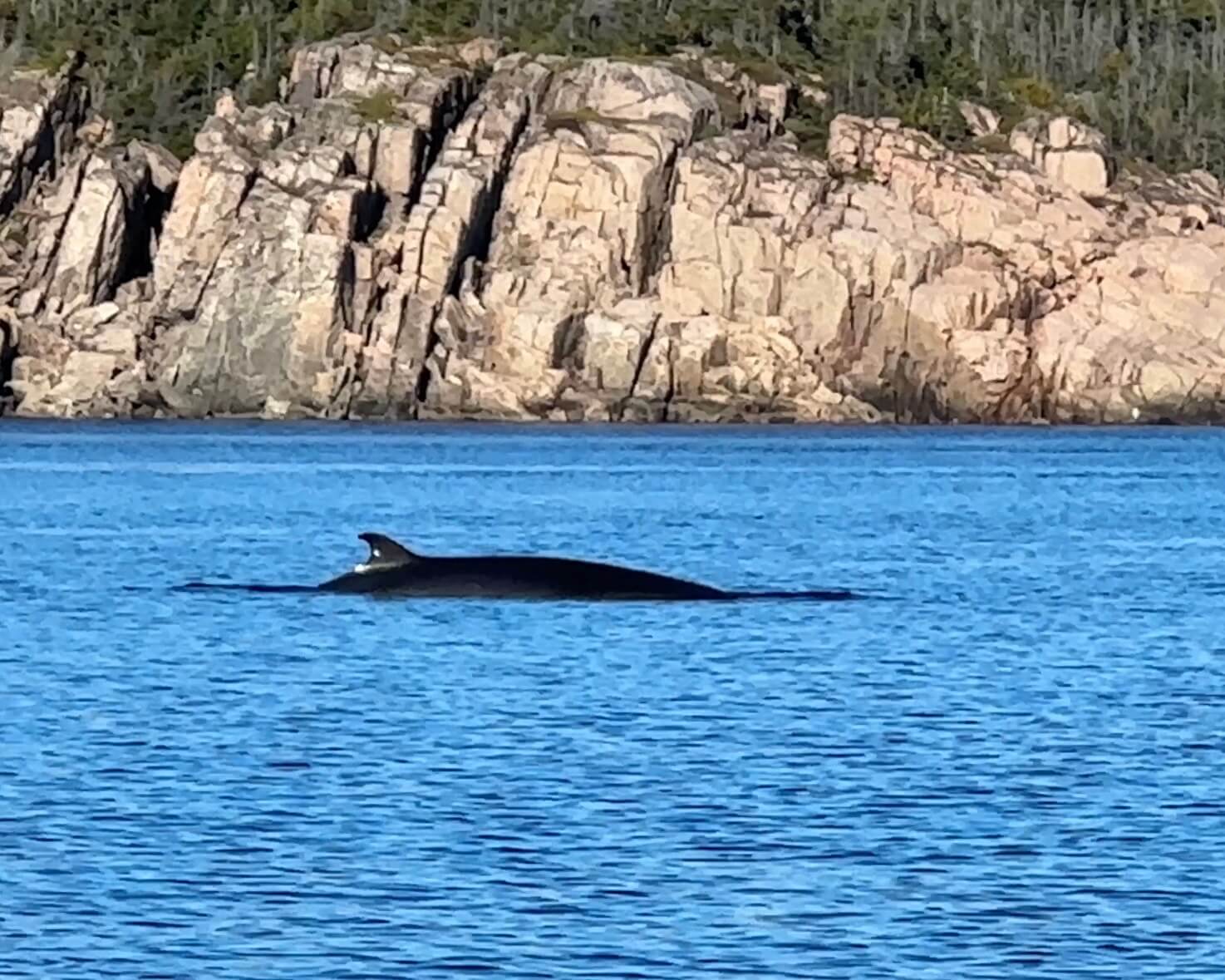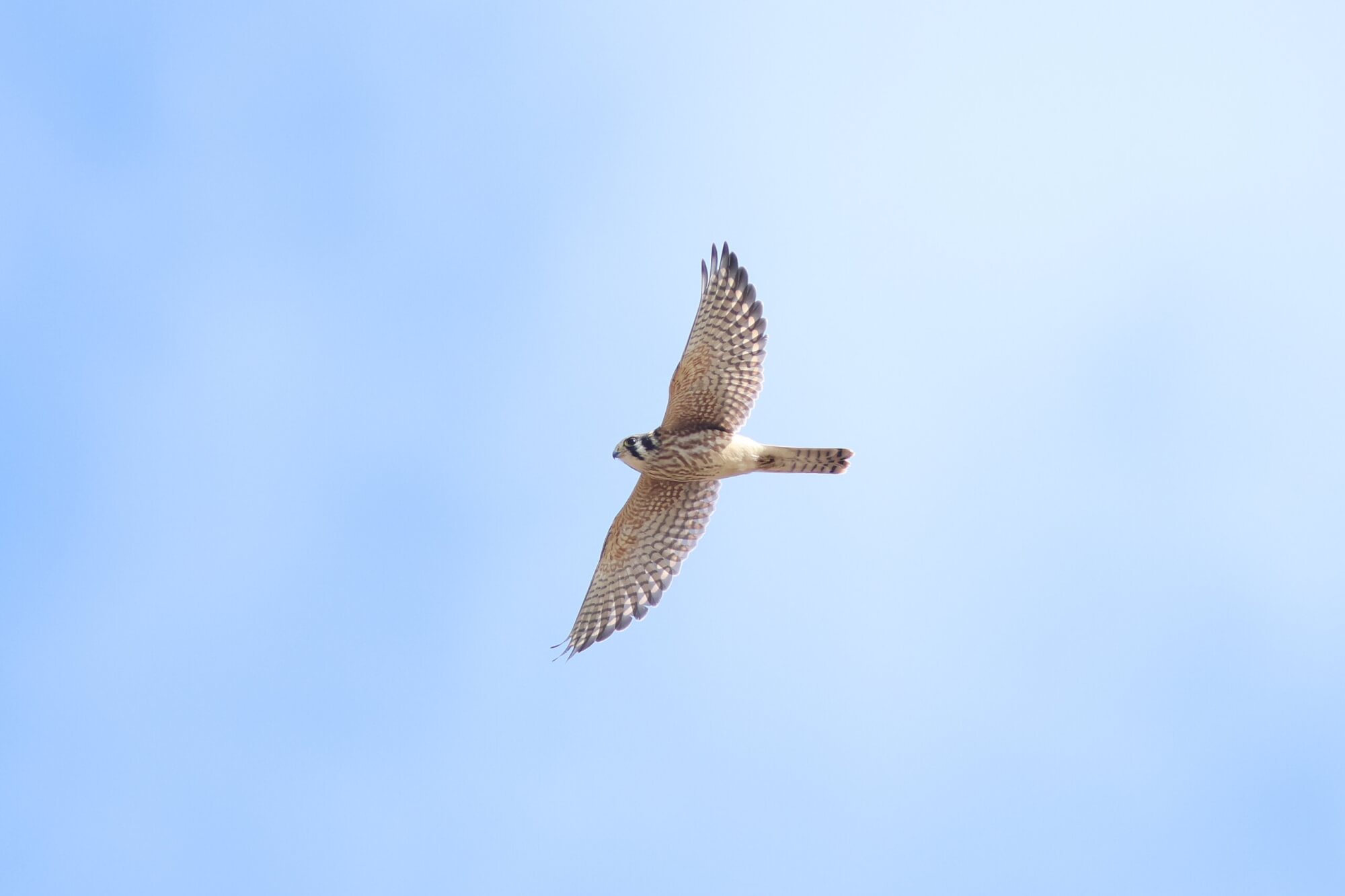What a joy to see whales and seals slip out of the water for a few seconds before completely vanishing, leaving behind nothing more than a ripple before that, too, fades away. And what a joy it is to witness the wonder that humans feel as they stand before these giants that have inspired folklore and legends. This week, these gentle and peaceful creatures of the abyss continue to dazzle us. Belugas, minke whales, white-sided dolphins, harbour porpoises, humpback whales, fin whales, blue whales and even an intruder in the mouth of the Saguenay Fjord.
A mild start to fall in Côte-Nord
In Tadoussac, minke whales have been present every day, as have belugas, harbour seals and grey seals. Harbour porpoises have also been noted despite their small dorsal fins, which are not always easy to pick out in the waves. In the moonlight, a North Shore resident listened to the soothing breaths of belugas and other marine creatures from Pointe de l’Islet. She was even surprised by what appeared to be a large seal splashing about just a few metres away!
Giants have been timidly returning to the Tadoussac and Les Escoumins sectors. In addition to the few humpbacks roaming the Saguenay–St. Lawrence Marine Park, there was a fin whale, two blue whales and a handful of harbour porpoises!
A stunning incursion
A naturalist tells of a significant happening that took place last Sunday: “I was leaving the house to go to work in the early afternoon. The street I take offers a nice view of Tadoussac Bay. Gazing out at the horizon, I suddenly catch a glimpse of a large blast! And then a long black back! Given the shape of the spout, could it be a humpback? I stop on the boardwalk for a closer look: indeed, the whale’s striking tail rises out of the water, suggesting the animal is about to take a dive. How incredible to make this observation just as I was leaving the house! It was magical!” Another naturalist adds that the whale “was playing tricks on the excursion boats.” Indeed, the humpback whale was moving quickly between Pointe de l’Islet and Pointe-Rouge, much to the delight of observers on shore who were able to see the beast briefly enter the Saguenay Fjord!
Megaptera novaeangliae in Charlevoix
In Port-au-Persil, local residents had the pleasure of observing three humpbacks over the past week, including probably H944 (Katana) and a new individual that remains unidentified! One observer was excited about what she described as “a ton” of belugas swimming in the pinkish waters of Charlevoix. These included young greys and large whites splashing around and showing their tails!
The art of observation
Binoculars, cameras or spotting scopes in hand, observers on the banks patiently watched in hope of seeing a spout, a fin or a snout split the water surface. Everyone has their own technique! Some stare at the water while others take advantage of the gentle autumn breeze to read or even carve wood between two glances at the open sea. This peaceful pastime seems as old as the world and yet, if today’s whales amaze (or even obsess) us, this hasn’t always been the case. Depending on the cultures and the eras, whales have embodied monsters, deities, and nowadays rare animals that we want to protect. What an incredible opportunity to be able to see them from the shores of the St. Lawrence!
The cete
Throughout the ages, whales and the mysteries that surround them have always conjured up strong emotions. In the bestiaries (manuscripts from the Middle Ages), the cete is a sea monster, the female of which is the “whale.” This is where the term cetacean comes from. In some medieval cultures, the whale was a terrifying creature that caused shipwrecks and was supposedly fond of human flesh. In the tales of the Arabian Nights, the whale is evil, treacherous and deceives sailors in order to drown or devour them while they are described as “ decent, harmless creature[s].” in Twenty Thousand Leagues Under the Sea. According to the Inuit legend of Sedna, whales embody life, wisdom and tranquillity.
Farther down the coast
At Pointe-des-Monts, Atlantic white-sided dolphins have arrived. One resident counted about twenty in a single glimpse, but it is difficult to know whether or not they were the same individuals as those that paraded past the window of his chalet. According to him, the total size of the group might very well have exceeded a hundred! The North Shore resident also tallied 15 to 30 grey seals and 5 or 6 minke whales in calm seas.
In Franquelin, a marine mammal enthusiast shares her observation:
“There were a lot of harbour porpoises this week in the Franquelin area. At least three minke whales as well. In addition to the usual rather solitary and scattered grey seals, a small herd [of grey seals] of about twenty passed through. The group was hemmed in by females who kept an eye on their surroundings, while the younger individuals were swimming fast… It was fascinating to watch!”
The local resident also had the opportunity to see a humpback whale, a species that has been rare in these parts recently. Moving quickly west between Franquelin and Baie-Comeau, “it was taking breaths at irregular intervals and sometimes covering quite large distances between them. I was able to observe this sequence three times before I completely lost sight of her!” she says.
In Gallix, two minke whales were spotted close to shore. Off the coast of Sept-Îles, scientists saw two groups of white-sided dolphins, five blue whales, two fin whales and two humpbacks! In the Mingan Islands, grey and harbour seals, harbour porpoises and minke whales are still present. A naturalist was even able to hear “howling sea wolves.” The term “loup marin,” French for “sea wolf” is a very old name used in these parts to refer to different species of pinnipeds in the Estuary and Gulf of St. Lawrence depending on the region. When grey or harbour seals vocalize, it sounds a lot like a wolf. In Quebec, many people even use this term to designate any kind of seal in the St. Lawrence.
Action on the south shore
In Gaspé Bay, a regular observed harbour seals and grey seals: “Grey seals eat striped bass, which means I have company when I go fishing!” she jokes. The local resident was also lucky enough to observe a humpback whale at Forillon National Park. In Gaspé, three humpbacks, three or four fin whales and a blue whale were also spotted from the coast!
Light winds, which are unusual for September, helped a Gaspé resident spot the blasts of these large cetaceans. Minke whales, harbour porpoises and white-sided dolphins round out this beautiful autumn scene!
In the waters around Matane, an amateur cetologist was able to document three fin whales, two blue whales, two humpbacks and about twenty belugas. The humpbacks were identified as Splinter, observed last July in Gaspé, and Chalk, encountered in mid-August in the same area. As for the two blue whales, “it was Jaw-Breaker, a well-known female in the estuary, and B488, whom I’ve known since 2013 but hadn’t seen since 2018,” reports the whale enthusiast.
On to the birds!
There’s also been a lot of action bird-wise, with razorbills, Atlantic puffins, white-fronted scoters, gulls, great blue herons, terns, ospreys, guillemots, common eiders, common loons, all sorts of shorebirds and other seabirds carpeting the air and waters of the St. Lawrence. Along the shores of Île Fantôme in the Mingan Archipelago, naturalists encountered a group of about forty young and adult razorbills. “We could hear not only their raucous cries, but also the soft cries of young birds and the whistles of guillemots,” says one of the naturalists.
At the Tadoussac dunes, migration is in full swing! A barrage of passerines, raptors, saw-whet owls and a record number of lesser black-backed gulls are just a fraction of what the Tadoussac Bird Observatory has observed this season.
Golden reflections of an intoxicating landscape
A landscape of a thousand colours is taking shape as the autumn days tick by. The captivating rhythm of the surf along the St. Lawrence lulls observers, tourists and locals alike. Marine mammals continue to dot the St. Lawrence in the golden reflections of the ever-moving waves. Both the estuary and the gulf mark the beginning of the ocean. The constantly changing water colour can be described in many ways: metallic waters of molten lead or cast bronze, or watercolour-like with orangish hues. The St. Lawrence can go from pastel, iridescent and pearly tones to indigo, vibrant, and occasionally dark greyish waters in a matter of hours. In this motionless watercolour, marine mammals also appear differently to us. Everyone appreciates and cherishes this undulating river in their own way.
Where are the whales this week? Observation map
These data were reported by our network of observers. They give an idea of the presence of whales and in no way represent the actual distribution of whales in the St. Lawrence. Just for fun!
Click on the whale or seal icons to discover the species, the number of individuals, additional information or photos of the sighting. To enlarge the map, click on the icon in the top right-hand corner. The map works well on Chrome and Firefox, but not so well on Safari.
To display the list of sightings, click on the icon in the top left-hand corner.
Thanks to all our collaborators!
Special thanks go out to all our observers who share their love for marine mammals with us! Your encounters with cetaceans and pinnipeds are always a pleasure to read and discover.
On the water or from shore, it is your eyes that give life to this column.
Anik Boileau
Odélie Brouillette
Lyse Brunet
Marie-Andrée Charlebois
Guylaine Côté
Michel Comeau
Catherine de Cotret
Laetitia Desbordes
Audrey Leblanc
Kevin Maltese-Crottier
Laure Mardnt
Yael Medav
Diane Ostiguy
Renaud Pintiaux
Chloé Pazart
Pascal Pitre
Jean Roy
René Roy
Andréanne Sylvain
Marielle Vanasse
Additionally, we would like to acknowledge the following teams that also share their sightings:
Sept-Îles Research and Education Centre (CERSI)
Group for Research and Education on Marine Mammals (GREMM)
Marine Mammal Observation Network (MMON)
Quebec Marine Mammal Emergency Response Network (QMMERN)
Mingan Island Cetacean Study (MICS)
Would you also like to share your observations?
Have you seen any marine mammals in the St. Lawrence? Whether it’s a spout offshore or just a couple of seals, drop us a line and send your photos to [email protected]!


